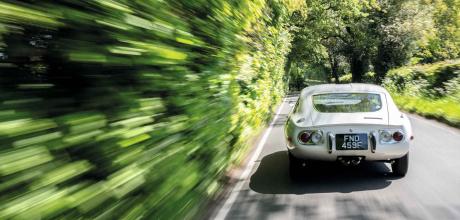1967 Toyota 2000GT
Rare, stylish and exquisitely engineered, the Toyota 2000GT revolutionised Japan’s motor industry — and charmed Robert Cor her.
Photography Paul Harmer
A yen for a ' sports car
JAPAN’S EXOTIC ICON TOYOTA 2000GT
Getting under the skin of Japan's exotic icon
ROBERT COUCHER
‘Maybe it's just the association with the ever-so-delightful Japanese actress and Bond Girl, Akiko Wakabayashi, that I have always been smitten by the enigmatic Toyota 2000GT. I thought it was to do with the way the wing mirrors followed the line of her exotic eye make-up. I now know more.' Read more of Roberts thoughts on.
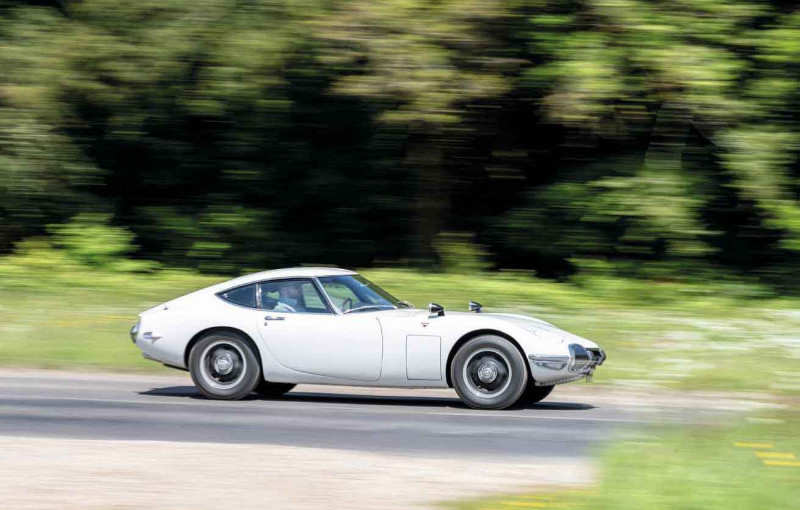
Imitation is the sincerest form of flattery so its said, and for decades the Japanese car industry has been dismissed as a copy-and-paste operation incapable of original thought. After World War Two, Japan became known for building reliable but dull cars such as the Toyota Corona and Nissan Bluebird. Hardly inspiring. But with international expansion taking off in the early 1960s, Japanese car-makers began to notice that leading European and American manufacturers were developing ‘halo’ cars to burnish their images. Think Mercedes Gullwing, Chevy Corvette or Jaguar E-type. So in 1965 the Japanese set about creating their very own halo automobile: the Toyota 2000GT.
‘Captivating looks aside, the car feels so thoughtfully and intelligently engineered’
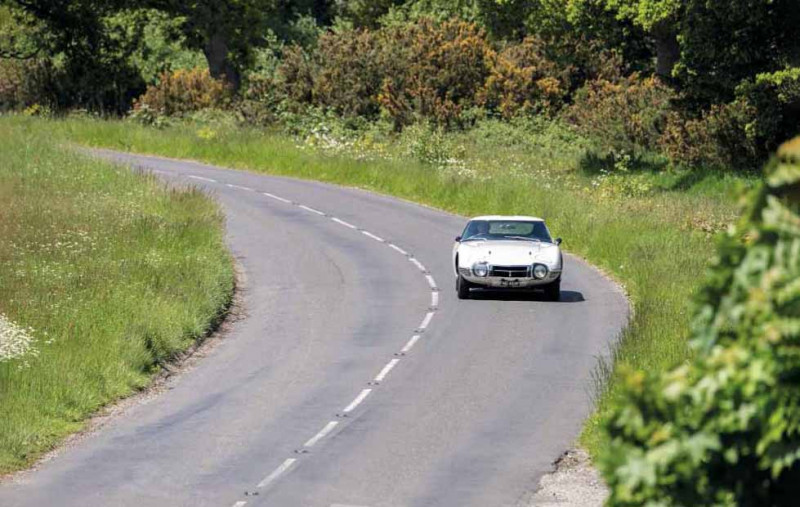
A team just five strong was carefully selected to work with Yamaha and undertake Project 280A under Toyotas lead engineer Jiro Kawano, including stylist Saturo Nozaki. Among a number of sports cars Toyota had purchased to study were an E-type, MGB, Triumph TR2, Porsche 911 and Lotus Elan. Before all this, Yamaha had started the development of a sports car for Nissan, only for the project to fizzle out. But Toyota was waiting in the wings and gave the Yamaha engineers the green light with the 2000GT.
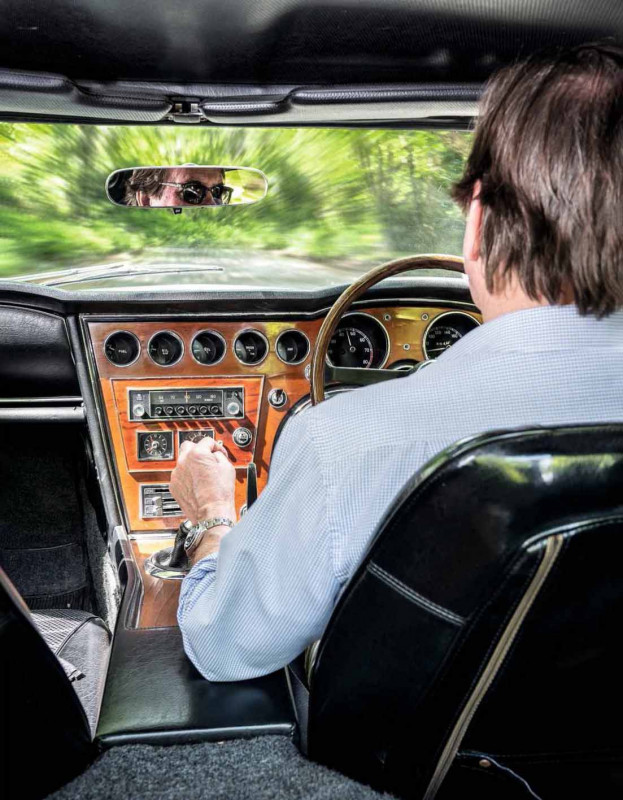
Having looked at and learnt from the competition, Kawanos team plumped for a Lotus Elan-type backbone chassis and fully independent suspension, with stylist Nozaki taking inspiration from Jaguars beautiful E-type. And this is where the Japanese engineers proved to be so clever: having studied the best on offer, they harnessed the results to their own advantage. Not so much imitation as further development — take Colin Chapmans racing-car- inspired suspension, team it with Sir William Lyons’ breathtaking styling, and add Yamaha’s beautiful little double-overhead-cam six-cylinder engine.
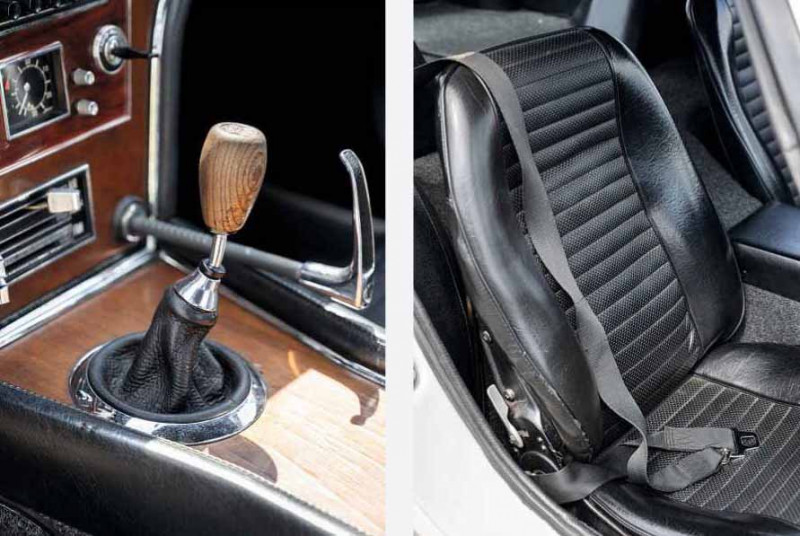
At the same time, the mainstream British motor industry was going the other way (backwards, sadly), offering cars with solid rear axles, lethargic engines, drum brakes and woeful build quality. Why didn’t the engineers at MG adopt Chapman-style chassis and twincam engines? Instead, the once-great BMC became BL and dwindled over three decades, finally leaving Mazda to come up with its own MGB replacement, the MX-5, in 1990.
Toyota first displayed the 2000GT at the Tokyo motor show in 1965: it was the best European sports car to have come out of Japan.
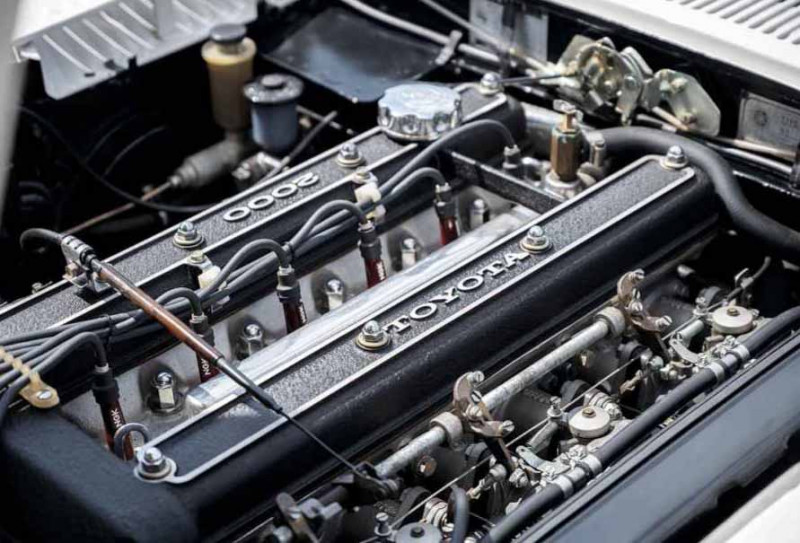
So what did Jiro Kawano and his select engineering team come up with? Though it’s often compared to the E-type, the 2000GT is a foot shorter, a few inches narrower and a good 2 1/2 inches lower than the Jaguar, standing just 45.7in high. It’s certainly diminutive in the metal, though not comically tiny like a Honda 800. Its side profile is its best angle, with deeply angled windscreen, lovely upswept doorlines and swooping coupe curves held taut over the underpinnings and balanced on a set of purposeful-looking magnesium-alloy wheels.
Technical is a word that comes to mind, with those pop-up front headlights, faired-in spotlights, and side-pods in the wings that house the battery and air cleaner. As with many classic cars, the head-on aspect is not its best, as the GT appears a bit geeky, with myopic headlights and skinny 165-section tyres that look as under-nourished as they sound.
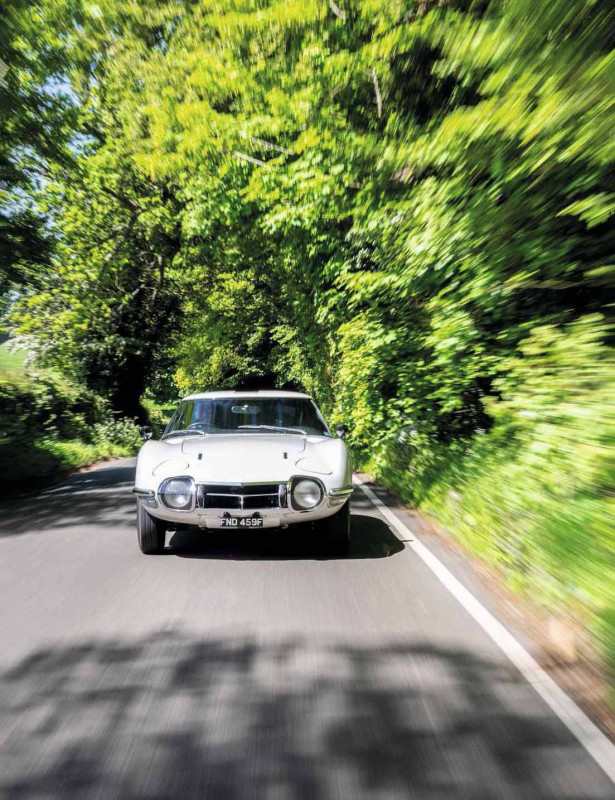
Although stylist Satoru Nozaki’s mission was to make the Toyota appear European, I think it exudes Japanese precision allied to neat spareness and lightness of touch. OK, the rear lights are a bit glitzy and the twin exhausts a bit racy; although the original rear-view mirrors perched on the wings look somewhat precarious (they work surprisingly well), they give the lean coupe a quirky Japanese twist.
Of course, this attractive sports car will forever be linked with the beautiful Japanese actress Akiko Wakabayashi, who starred with the 2000GT alongside Sean Connery in You Only Live Twice. That car’s roof had to be removed so Connery could insert his 6ft 2in frame into the passenger seat. Yet the GT was not just a show pony. In 1966 one finished third in the Japanese Grand Prix at Fuji and won the Suzuka 1000 Kilometres later the same year, as well as the Fuji 1000 Kilometres in ’67. Carroll Shelby entered a pair of 2000GTs in the SCCA production car races in 1968 for just one season, and they performed well. One of these Shelby-Toyota racing cars sold at auction for $2.5million in 2022.
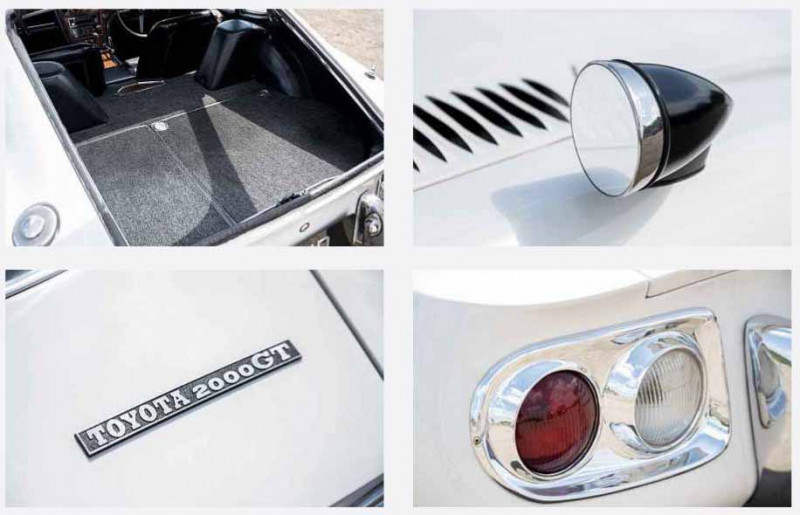
The 2000GT s doors are long and offer easy ingress to the compact coupe interior, unlike an E-type, the doors of which are short and tight. Toyota thankfully did not try to squeeze 2+2 seating into the internal space, so, once slid into the very comfortable driver’s seat, there’s enough room for my 5ft 8in frame between the steering wheel and dash, and plenty of rearwards movement along with a deep footwell. Of course, if you are a six-footer and packing some extra timber, the various apertures might be too tight.
I’m not so sure the very trad-Brit sports car interior matches the back-to-the-future exterior, but it’s nice to know the cherrywood dashboard veneer comes from the musical instrument side of Yamaha’s business. And, unlike British or American sports cars of the period, in which instruments tend to be scattered about the dash, here they are neatly lined up and regimented. The wood-rimmed steering wheel is optimal in size, and the high-mounted handbrake lever offers a rifle action. This is a grand touring interior that’s clearly beautifully made, not some stripped- out cafe racer, and the fully upholstered rear deck, aft of the two seats, offers plenty of room for soft luggage too.
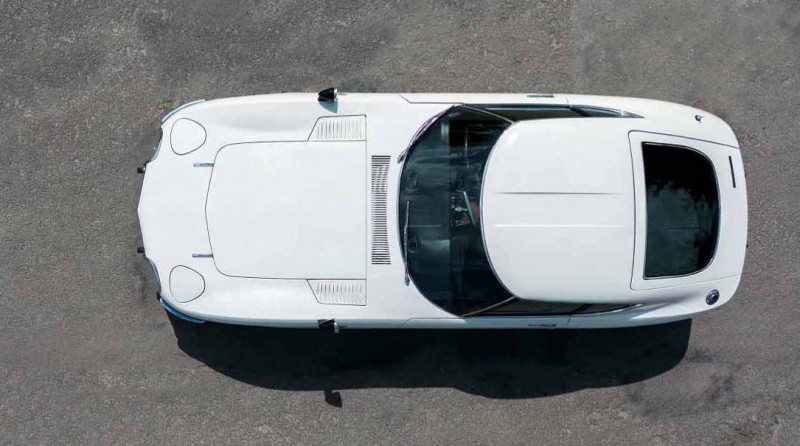
Let’s see if the dynamics can support those GT aspirations. The 1988cc six-cylinder engine is based on that of the Toyota Crown saloon but has been enhanced by a Yamaha-designed twin-cam cylinder head and is fed by three Mikuni-Solex 40 carburettors, exhaling through a very curvaceous set of exhaust manifolds. Turn the ignition key, allow the fuel pump to prime for a few seconds then give the carbs a double dab of juice. The little six fires as you add more petrol to get all half-dozen inlet throats working in unison. The clutch is light but direct and first gear snicks into place satisfyingly. Move off and the GT’s modest 1120kg weight and low first gear ratio mean you don’t notice the relatively low peak of 130lb ft of torque at a high 5000rpm, but the car is cold and you’re not about to rev it so high anyway. What you do notice is that the gearbox is not quite ready just yet.
Unlike modern cars, classics appreciate a few gentle miles to allow them to warm through so all their relative tolerance settings heat up and expand at the optimum operation temperature. With about a quarter-of-an-hour’s driving in heavy urban traffic, the 2000GT proves to be easy to operate and feels incredibly modern for a 56-year-old vehicle. Escape the urban confines and, with everything up to temperature, it’s time to allow the straight-six to rev. Drop down two gears; the engine gulps greedily at air and petrol, comes on cam and starts to sing sweetly to the 6600rpm rev limit. As the exhaust note rises, rises… and rises, the engine sounds larger than its modest two-litre capacity and keeps pulling with muscular enthusiasm, accompanied by the mechanical rasp of a thoroughbred.
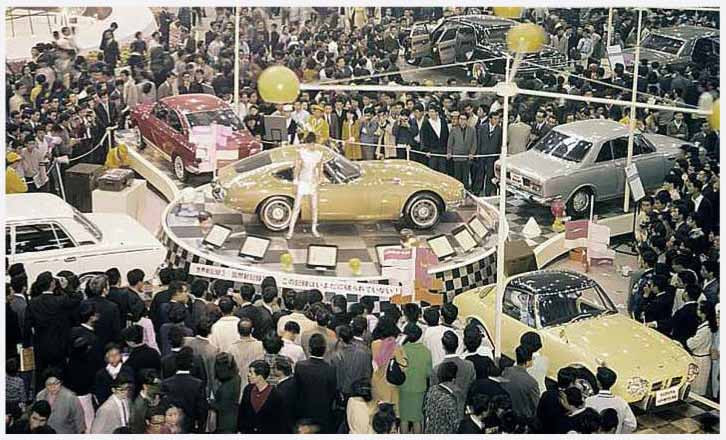
The rack-and-pinion steering is a delight — light and direct, with just 2.7 turns lock-to-lock — and the servo-assisted disc brakes are strong and reassuring. The rigid backbone chassis, with its widely spaced wishbone suspension, provides a low centre of gravity, a high roll centre and good suspension travel, without introducing pitch or roll. The ride remains pliant but controlled on real- world, broken British B-roads. You can crest an unknown yump, find that the road then swerves in an unexpected direction and the GT will quell, damp, recover from the suspension unload, and change direction accurately with composed yaw. Tight and controlled progress is its manner on narrow lanes, enough to embarrass many more powerful sports cars that are admittedly heavier and wider. This GT is impressively capable, even from a modem car perspective.
‘The engine sounds larger than its modest two-litre capacity and keeps pulling with muscular enthusiasm’
Rather than flattening the topography that disappears under the GT’s bonnet at ever-increasing speed, the 2000GT dances over it, in a controlled pitter-patter. The skinny Michelin XZX tyres don’t mash or fight, they skip with plenty of traction for the 134bhp-per-ton that’s on offer. Hot to trot, with plenty of revs on the dial, the five- speed gearbox is quick enough but remains the least cooperative interface in this otherwise delicate car. First gear is low with a big gap to second, where the synchro is weak, and the gearshift action, though short and precise, remains stiff, which is at odds with the rest of the dynamic set-up.
This was noted by the Road & Track test of the Toyota when new and is just something one has to drive around when trying to get the best from it, as in many a classic car. Equally, the carburettors prove a little uncooperative at low revs as they hesitate and pop in crawling traffic. When the six butterflies open, they suck like an Electrolux and all is well, but a synchronising tune-up might be advised. Wabi-sabi.
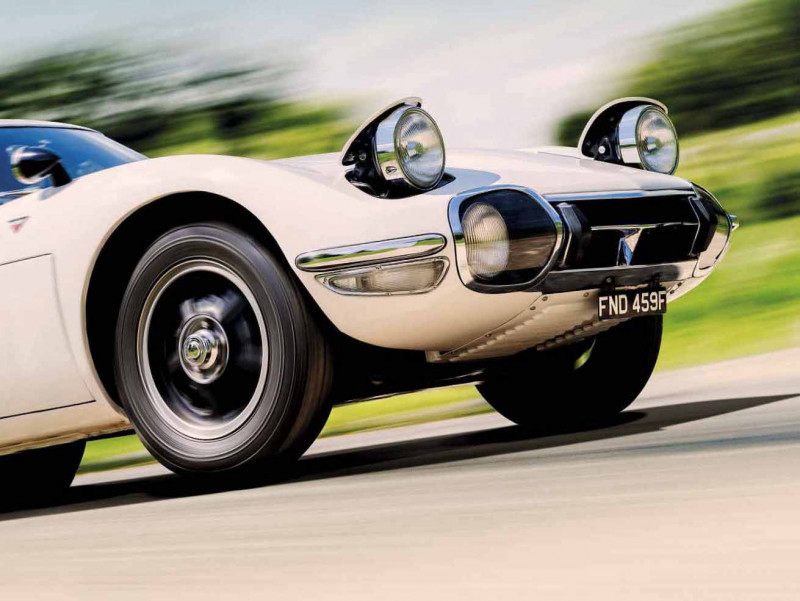
Only 351 Toyota 2000GTs were built between 1967 and 1970 and just 62 left-hand-drive cars were sent to America. This example, chassis number MF10-10129, finished in original Pegasus White with black interior, was somewhat surprisingly delivered to Mozambique in 1968 along with a Solar Red example. Apparently a Mr Sa, the local Toyota dealer, took delivery of them before this one found its way to Portugal and then on to Essex, UK. Having covered only some 43,000km, it was found to be in largely uncorroded and original condition thanks to a gentle life in a benign climate. As such, a body-off chassis restoration was not required; instead the car was subjected to a thorough preservation process. A full engine rebuild was exacted, along with renewing the suspension and brakes, while the amazingly original interior was kept intact. The result of all this painstaking restorative work was this 2000GT winning the ‘Best in Show’ award at the prestigious London Concours in 2022.
Is this really the best sports car ever to have come out of Japan? Road & Track opined after testing the pre-production model in 1967 that it was ‘one of the most exciting and enjoyable cars we’ve driven’. And having had the good fortune to drive 10129, I have to agree. Captivating looks aside, the car feels so thoughtfully and intelligently engineered. The build quality is unimpeachable, and the clean-sheet-of-paper concept is focused, pure and precise, rendering the Toyota more than the sum of its parts — which, for a fast GT car, is the ultimate goal. It could be a cold and efficient piece of kit, but it’s not. The 2000GT is an engaging, enjoyable sports car that’s ultimately a joy to drive — the $ 1 million rarity from the Land of the Rising Sun.
THANKS TO Autofficina, Epsom, Surrey, where this Toyota 2000GT is for sale: autofficina.co.uk
Opposite and above Exposed driving lamps and skinny tyres put frontal aspect at odds with swooping profile; delicate detailing is characteristically Japanese.
Above and opposite Goucher takes his turn behind the wheel and enjoys the beautifully made interior; twin-cam 2-litre straight-six was developed by Yamaha
TECHNICAL DATA 1967 Toyota 2000GT
- Engine 1983cc DOHC straight-six, three Mukini-Solex carburettors, extractor exhaust
- Max Power 148bhp @ 6600rpm
- Max Torque 130lb ft @ 5000rpm
- Steering Rack and pinion
- Transmission Five-speed manual, rear-wheel drive
- Suspension Front and rear: double wishbones, coil springs, telescopic dampers, anti-roll bars
- Brakes Discs, servo-assisted
- Weight 1120kg
- Top speed 140mph
- 0-60mph 8.5sec
Above The model Twiggy presents one of two gold 2000GTS specials at the 1967 Tokyo motor show — she was later gifted the car, the other going to Honda.
Anyway, I have no idea where I got the idea that the Japanese GT was about £15,000 in 1996 because, according to the contemporary price guide, an excellent example was then £50k, which I know from personal experience was more-or-less enough to buy a three-bed excouncil flat in Fulham at that time (though it wouldn’t be for long). In comparison, the blue- blooded old-money greats were far from the presumed ten times the price, with an LP400 just £7kmore, a 507 for £75,000 and a Gullwing double, at a fraction over £100k.
According to the Classic Car Price Guide (buy from magsdirect.co.uk), a decent 2000GT today is £470,000 (though it might take almost double that to buy one like ours’), roughly half the price of a Miura or Gullwing. The only seismic change has been the 507, which is now valued at four times the price of the 2000GT.
There are lots of reasons for this, of course, primarily power and performance, plus I suspect a tendency for people to think of the difficult-to-pigeonhole 2000GT more as a fancy Datsun 240Z rival than even an E-type competitor. It is probably only the Toyota’s rarity, with just 337 built, that elevated it above its mass-produced countryman and the Brit. In fact, you must wonder whether we would have even have heard of it if it weren’t for that brilliant bit of product placement (of a convertible that couldn’t be bought) in You Only Live Twice. Oddly, for me, all of that just adds to its insuperable allure. Plus, it’s bloomin’ gorgeous. And I fit in it.
My car-owning history shows I am a sucker for a hybrid, whether it be a plastic sports car that turns Ford basics into a worldbeating combination, or a boisterous GT combining Italian looks, American power and British, er, weight. As an Interceptor owner, I found driving the Iso Rivolta especially interesting, but for me the project itself was more fascinating. Underneath it is like a brand new car; on the top it looks as if it has just been dragged out of a California canyon. That juxtaposition can challenge your senses, but ultimately it is a visionary triumph.


